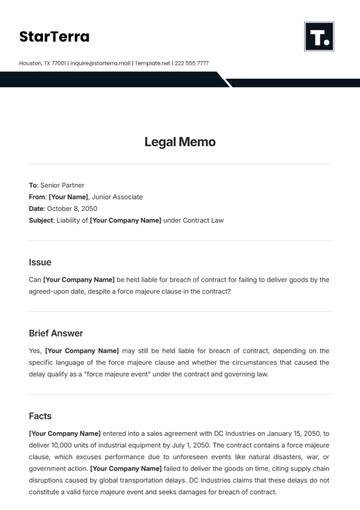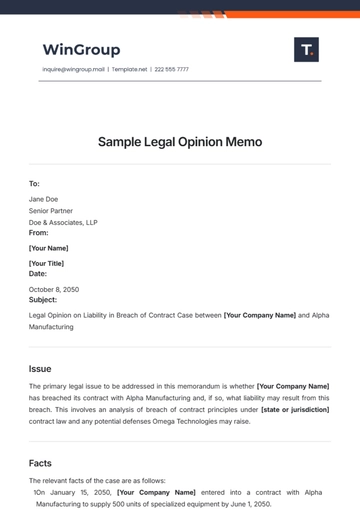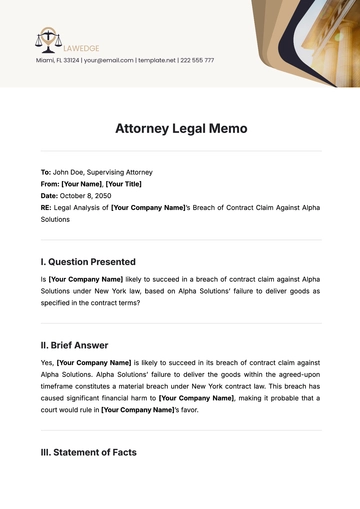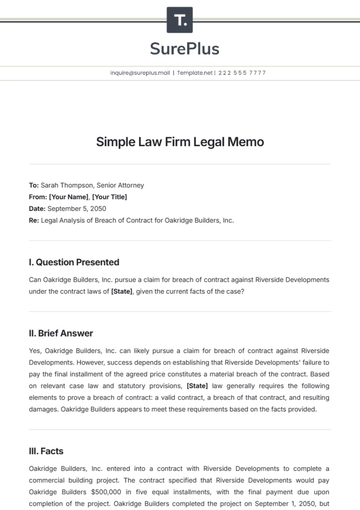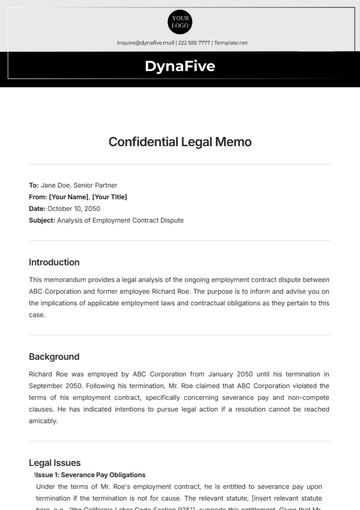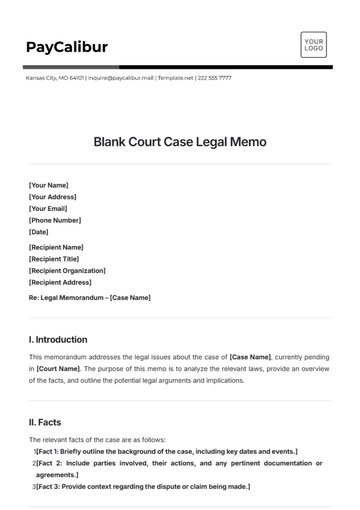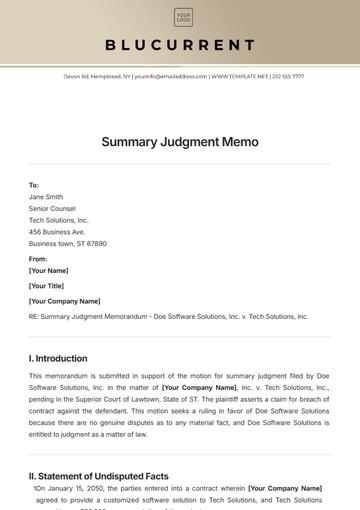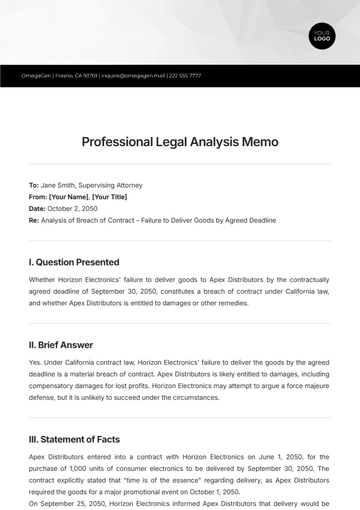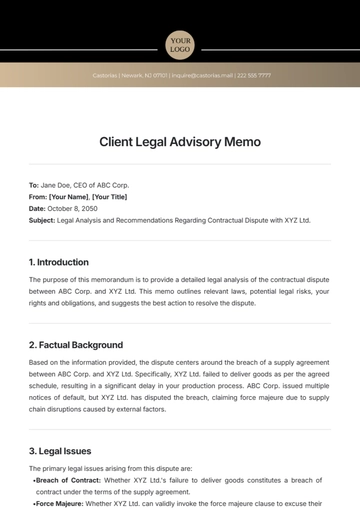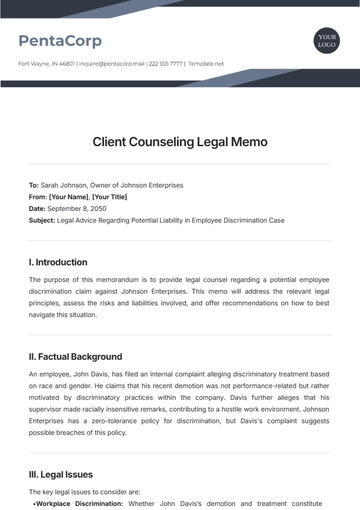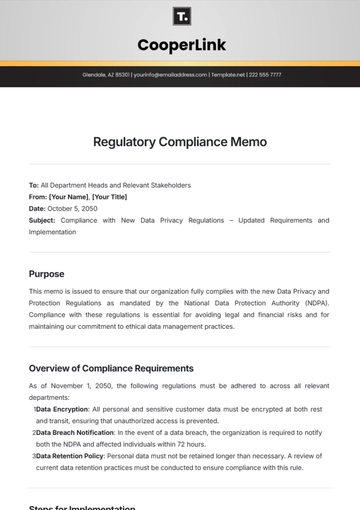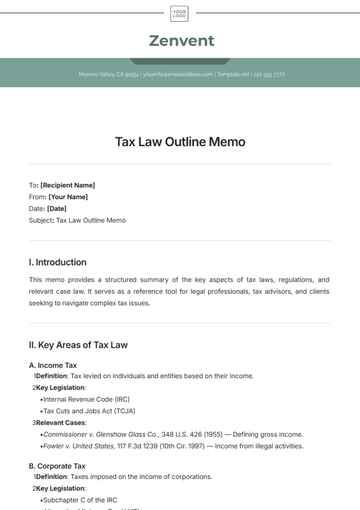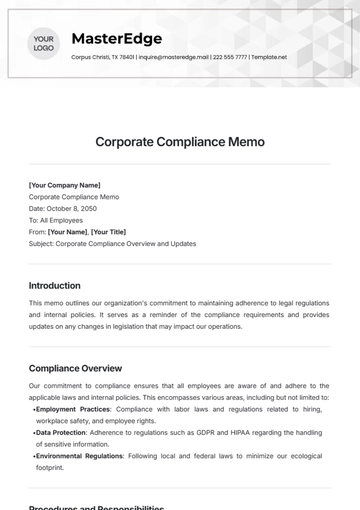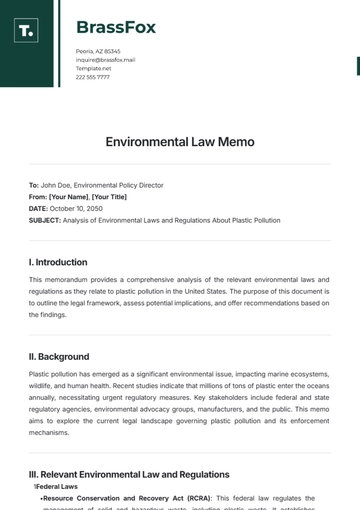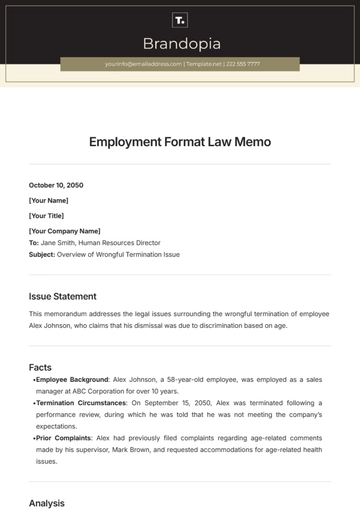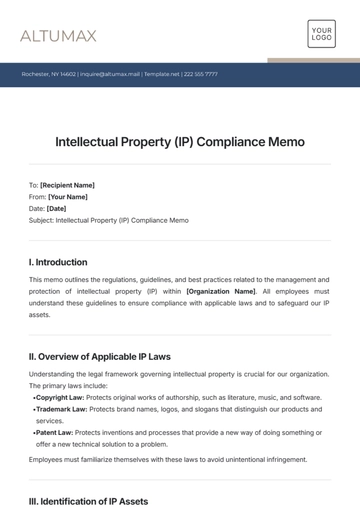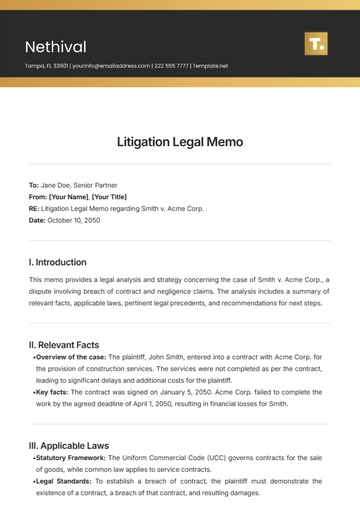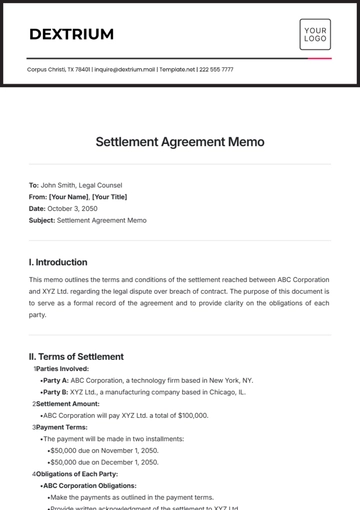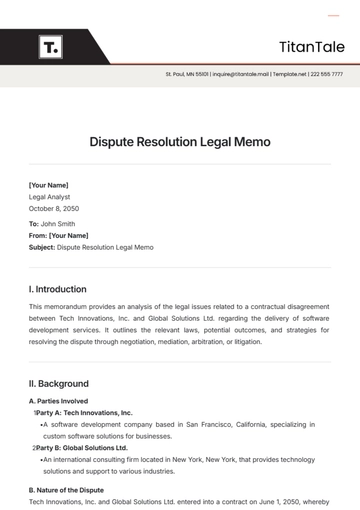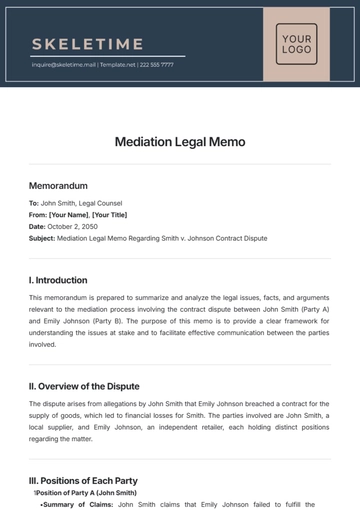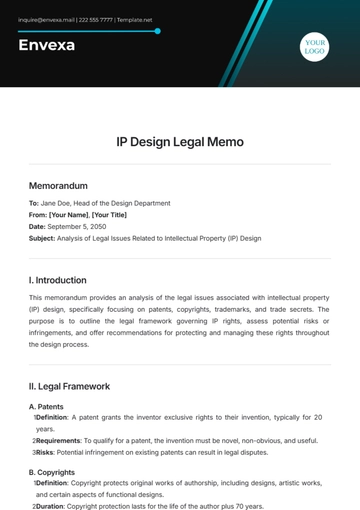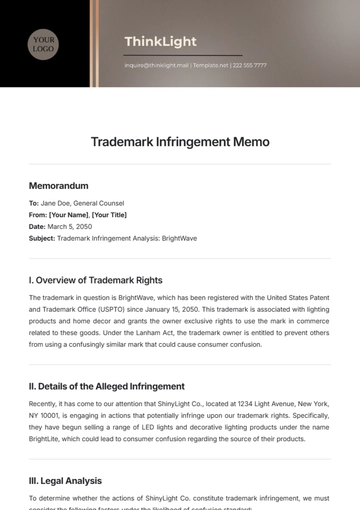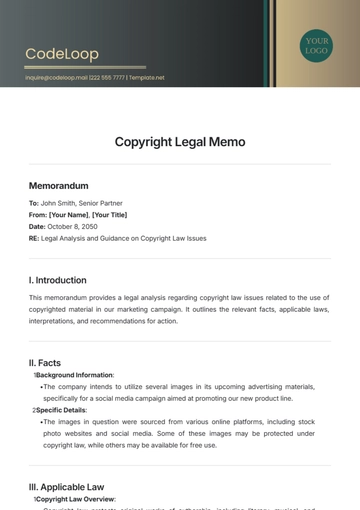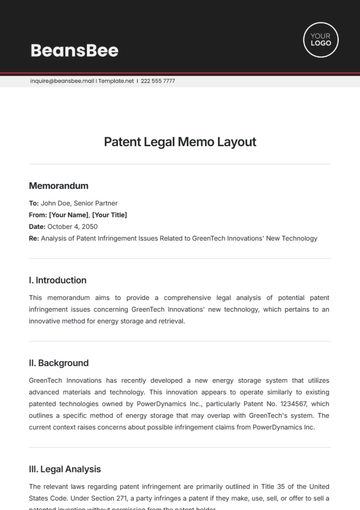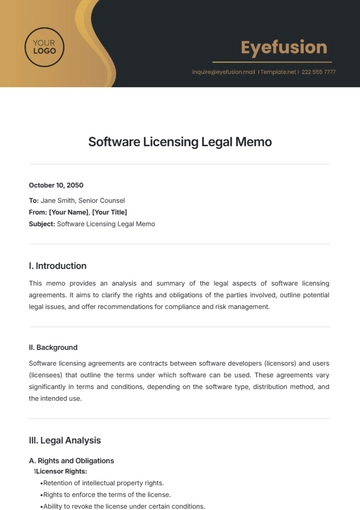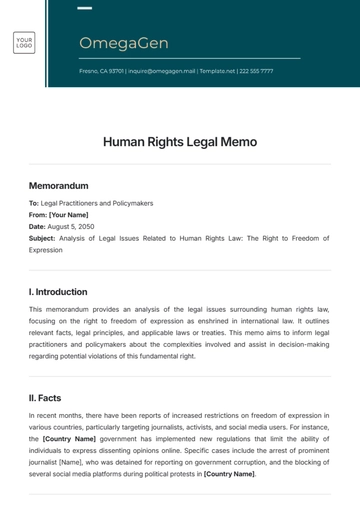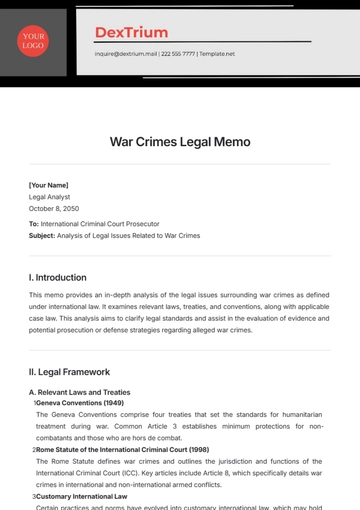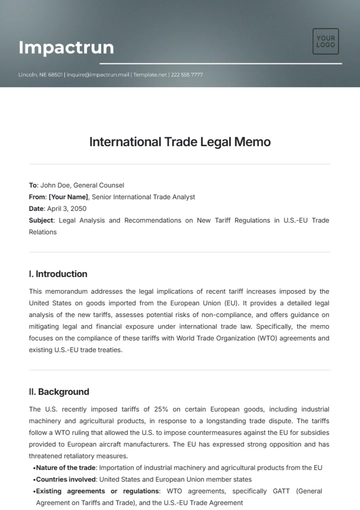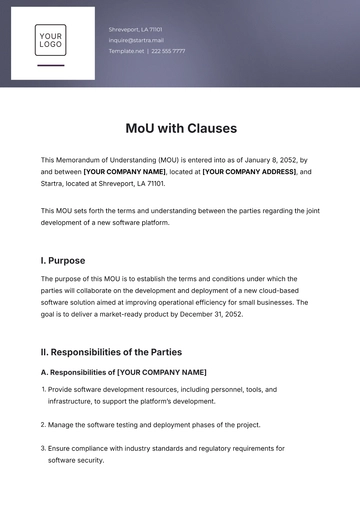Free International Trade Legal Memo
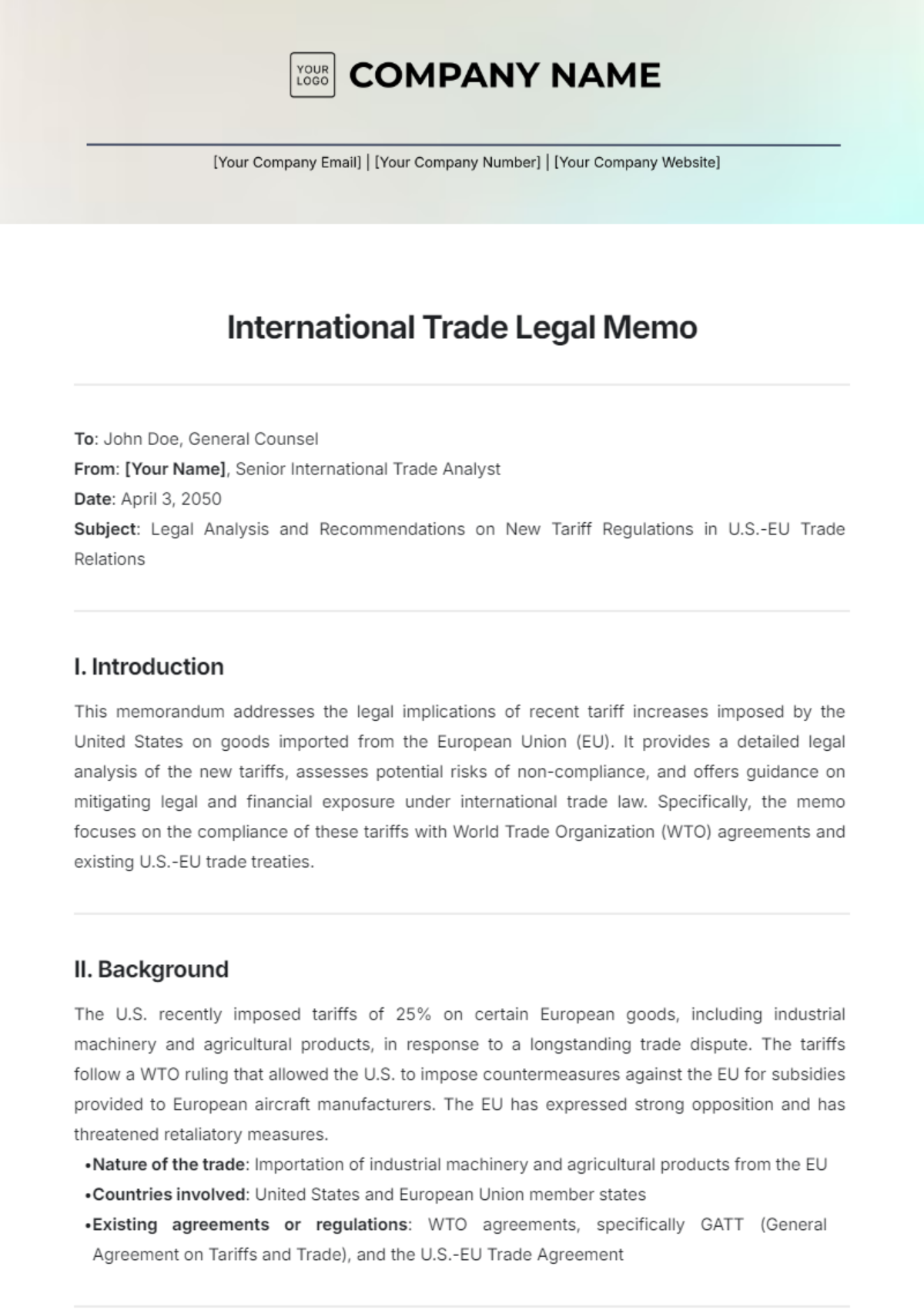
To: John Doe, General Counsel
From: [Your Name], Senior International Trade Analyst
Date: April 3, 2050
Subject: Legal Analysis and Recommendations on New Tariff Regulations in U.S.-EU Trade Relations
I. Introduction
This memorandum addresses the legal implications of recent tariff increases imposed by the United States on goods imported from the European Union (EU). It provides a detailed legal analysis of the new tariffs, assesses potential risks of non-compliance, and offers guidance on mitigating legal and financial exposure under international trade law. Specifically, the memo focuses on the compliance of these tariffs with World Trade Organization (WTO) agreements and existing U.S.-EU trade treaties.
II. Background
The U.S. recently imposed tariffs of 25% on certain European goods, including industrial machinery and agricultural products, in response to a longstanding trade dispute. The tariffs follow a WTO ruling that allowed the U.S. to impose countermeasures against the EU for subsidies provided to European aircraft manufacturers. The EU has expressed strong opposition and has threatened retaliatory measures.
Nature of the trade: Importation of industrial machinery and agricultural products from the EU
Countries involved: United States and European Union member states
Existing agreements or regulations: WTO agreements, specifically GATT (General Agreement on Tariffs and Trade), and the U.S.-EU Trade Agreement
III. Legal Framework
Several international trade agreements and regulations are relevant to the analysis of the recent U.S. tariffs:
World Trade Organization (WTO) Agreements: The WTO’s Dispute Settlement Body ruled in favor of the U.S., allowing it to impose countermeasures under the Subsidies and Countervailing Measures (SCM) Agreement.
General Agreement on Tariffs and Trade (GATT): GATT Article XXVIII allows for tariff renegotiations under specific conditions, but the application of the recent tariffs must still comply with broader WTO obligations.
U.S.-EU Trade Agreement: This bilateral trade agreement emphasizes cooperation and the removal of trade barriers, which could be undermined by escalating tariffs and retaliatory measures.
IV. Legal Analysis
The U.S. tariffs are legally grounded in the WTO’s ruling; however, there are several key risks to consider:
Compliance: While the WTO ruling provides a legal basis for imposing tariffs, the scope and extent of the U.S. measures may be viewed as excessive, potentially violating the principle of proportionality under GATT.
Risks of Retaliation: The EU has announced its intention to impose retaliatory tariffs on U.S. goods, which could escalate into a trade war. Such actions could lead to further disputes at the WTO, complicating diplomatic relations and increasing legal costs for U.S. companies reliant on EU markets.
Trade Dispute Potential: The EU may file a formal complaint with the WTO, claiming that the U.S. has exceeded the authorized limits set by the WTO ruling. This could lead to a protracted legal dispute and potential sanctions if the U.S. is found to be in violation.
V. Recommendations
To minimize legal and financial risks, the following actions are recommended:
Review of Tariff Scope: Reassess the scope of the tariffs to ensure that they align with the WTO ruling and avoid excessive penalties that could be challenged by the EU.
Negotiation with the EU: Initiate negotiations with EU trade representatives to de-escalate tensions and explore potential settlements or tariff adjustments. This could prevent retaliatory tariffs and maintain favorable trade relations.
Monitoring and Compliance: Continuously monitor developments in WTO rulings and U.S.-EU trade relations to ensure ongoing compliance with international trade laws and agreements. Implement strategies to mitigate potential retaliatory actions, such as diversifying supply chains.
VI. Conclusion
The recent U.S. tariffs on EU goods, while legally justifiable under WTO rulings, present significant risks of retaliation and further trade disputes. It is critical to ensure that the scope of the tariffs is proportionate and that diplomatic negotiations are pursued to prevent an escalation of tensions. The recommended course of action includes reassessing the tariffs, engaging in diplomatic negotiations, and closely monitoring legal developments in international trade.
- 100% Customizable, free editor
- Access 1 Million+ Templates, photo’s & graphics
- Download or share as a template
- Click and replace photos, graphics, text, backgrounds
- Resize, crop, AI write & more
- Access advanced editor
